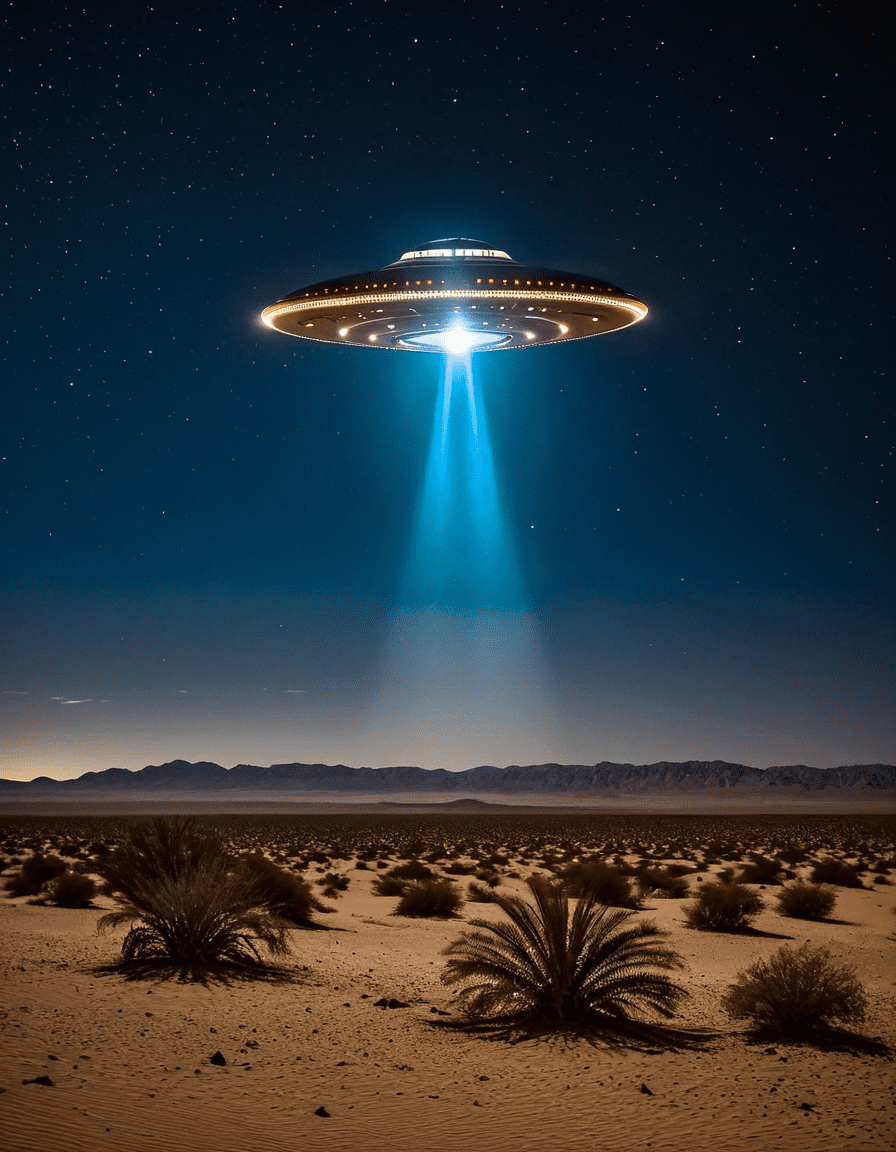As we delve into the innovative world of cinema, few films have sparked the kind of conversation that Jordan Peele’s “Nope” has since its release in 2022. Now, four years later in 2026, it’s safe to declare “Nope” isn’t merely a film; it’s a groundbreaking masterpiece that shakes up genre norms. Its layered storytelling, thematic depth, and striking visuals make it echo in the hearts of audiences long after the final credits roll. Let’s dive deep into the seven pivotal elements of “Nope” that fortify its place as an essential piece of contemporary horror.

1. A Unique Blend of Genres: Quiet and Scary
“Nope” isn’t just another horror film. It’s a smorgasbord that artfully combines elements of horror, science fiction, and a hint of Western flair. This unique concoction creates a chilling atmosphere that sticks with viewers like a well-remembered dream. Peele’s knack for inducing fear without relying on standard jump scares is nothing short of revolutionary. Those eerily quiet moments? They build such suspense that your nerves prickle—much like the spine-tingling silence found in films like Robert Eggers’ “The Witch.”
Jordan Peele’s brilliance shines when he plays with the tension between what we see and what lies beneath. Scenes featuring the infamous cloud formations evolve into visual metaphors for both wonder and impending doom. This contrast marries the serene with the terrifying, casting an indelible mark on horror cinema.

2. Commentaries on Spectacle and Exploitation
Beneath its gripping narrative, “Nope” acts as a thought-provoking critique of Hollywood’s spectacle-driven culture. OJ and Emerald Haywood, the film’s protagonists, symbolize the struggles marginalized communities endure in the industry. Much like Spike Lee’s “Bamboozled,” “Nope” lays bare the mechanisms of, and the often exploitative practices surrounding, media representation.
One can’t overlook how “Nope” holds up a mirror to society, prompting us to consider how stories of color are frequently commodified. Peele invites viewers to reflect on these themes while still delivering a thrilling ride, daring audiences to confront the implications of their entertainment choices. Are we all just passive spectators, overlooking deeper issues in our quest for sensationalism?
3. Groundbreaking Visual Effects and Cinematography
Peele’s “Nope” transcends standard visual storytelling; it carves out its own legacy through astonishing cinematography. With acclaimed cinematographer Hoyte van Hoytema at the helm, known for visually stunning works like “Interstellar” and “Dunkirk,” the film showcases how vital visuals are in conveying an atmosphere of dread and excitement.
Innovative visual effects elevate “Nope” beyond mere narration. Shots of haunting cloud formations symbolize larger themes of fate and fear, captivating audiences and leaving them in breathless awe. This is where horror meets artistry, and you don’t want to miss this thematic blend.
4. Psyche of Fear: Character Depth and Development
Peele doesn’t just create horror; he crafts rich characters with intricate backstories that demand layered performances. Daniel Kaluuya portrays OJ, embodying a quiet strength that’s equal parts captivating and haunting. In sharp contrast, Keke Palmer as Emerald injects vibrancy and audacity, creating chemistry that draws viewers in.
As they navigate their own psychological journeys, the characters’ arcs resonate deeply with the audience. This character depth echoes the intensity seen in modern horror classics like Ari Aster’s “Hereditary,” underscoring the importance of emotional stakes that many horror films often skimp on. Because in the end, that’s what horror really is—a reflection of our deepest fears mirrored in the characters we grow to care for.
5. The Role of Symbolism and Allegory
Symbolism in “Nope” adds layers of meaning, inviting viewers to engage with its deeper themes. The film’s chilling question, “What’s a bad miracle?” acts as a philosophical backdrop, fostering discussions on fate and autonomy. It deftly intertwines allegory about societal issues, including race and media portrayal, broadening its narrative impact.
Much like “Get Out,” which tackled racial dynamics through the horror lens, “Nope” offers insights that resonate beyond the immediate scares. This layered storytelling makes the horror feel personal and urgent, forcing audiences to grapple with weighty themes while experiencing spine-chilling moments. You’ll leave the film not just scared, but with serious food for thought.
6. Audience Engagement: Brevity and Reflection
Through its unsettling narrative, “Nope” fosters an interactive viewing experience. Viewers are challenged to examine both the plot and their own relationship with fear. Unlike most current horror films steeped in instant gratification, it pulls back, allowing space for interpretation and contemplation—much like episodes of “Black Mirror.”
Stories from “Nope” linger in your mind long after leaving the theater. Peele teases the audience without spoon-feeding answers, inviting us to engage critically with what we’ve witnessed. This approach sets “Nope” apart, ensuring its place as an innovative entry in modern horror.
7. Cultural Impact and Legacy in Horror
When discussing “Nope,” it’s impossible to ignore its cultural ramifications. The film has sparked countless discussions about representation and genre evolution, setting new benchmarks for what audiences crave in horror content. As we continue to navigate the cinematic landscape, Peele’s film inspires fresh narratives focusing on engaging storytelling and insightful character development.
The ripples of “Nope” can be seen in upcoming horror films prioritizing these themes over mere sensationalism. We’re witnessing a seismic shift in how horror is produced and perceived, moving towards narratives that not only scare us but provoke thought and dialogue.
Celebrating the brilliance of “Nope,” it’s clear that its legacy will endure, continually shaping the horror genre for years to come. It pushes boundaries and invites us to confront what frightens us most—not just in the film, but in the multifaceted tapestry of everyday life.
In conclusion, “Nope” isn’t just another addition to cinematic history; it’s a bold movement challenging us to consider how fear intertwines with our existence, echoing broader societal truths. Whether you’re a die-hard horror fan or someone seeking profound narratives, “Nope” is mandatory viewing.
So, what are you waiting for? Grab your popcorn and prepare to delve into the quiet, scary brilliance of “Nope.” You may never look at cinema—let alone fear—the same way again!
Nope: The Groundbreaking Masterpiece You Must See
Behind the Scenes and the Symbolism
Did you know that the expansive sky scenes in nope hold a deeper meaning? Director Jordan Peele plays with visual tones, favoring a striking pastel purple hue to evoke emotions tied to the film’s themes. This intentional choice sets an otherworldly atmosphere, reminiscent of an eerie ritual that elevates the suspense. It’s fascinating how nope intertwines scenes with the concept of representation as it explores how people engage with trauma and spectacle. Peele’s references to cinematic history often serve as the stone upon which he builds his films, drawing from past legends while also forging his path.
A Cast of Characters
The ensemble cast of nope brings an impressive energy, with standout performances, especially from Daniel Kaluuya and Keke Palmer. Interestingly, Palmer’s character, Emerald, has a vibrant personality that contrasts sharply with the film’s darker themes. She embodies not just a survivor but a self-assured figure in a historically underrepresented role. You might be surprised to learn that nope is also packed with Easter eggs and hidden references, making it a delightful watch for fans of the genre while resonating with those familiar with Mmo junkie culture, as it parallels the gaming world’s engagement with narrative-driven experiences.
Cultural Impact and Critical Reception
Nope has been hailed not just as a horror movie but as a cultural critique that examines humanity’s fascination with fame versus tragedy. Remember that iconic scene with the Flames? It’s a moment of tension that serves as a catalyst for the film’s climax, reflecting broader societal issues. Critics have noted how Peele navigates these themes skillfully, making it feel relevant for today’s audiences. It’s even been compared to past horror triumphs, echoing sentiments from yesterday while reshaping what we expect from the genre. Nope is more than entertainment; it’s a conversation starter wrapped in brilliant cinematography and storytelling.
Fans of Ludwika Paleta or those who have scoured reviews during the recent Best Buy black Friday sales might find themselves drawn to nope for its unique perspective and engaging plot. Who knew a horror film could serve as both thrilling and thought-provoking? As the landscape of cinema shifts, Peele’s work stands out, creating lasting impressions and unforgettable discussions among cinephiles.





